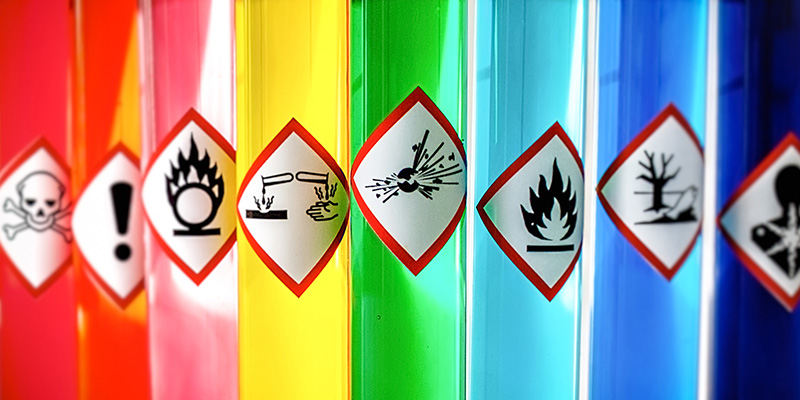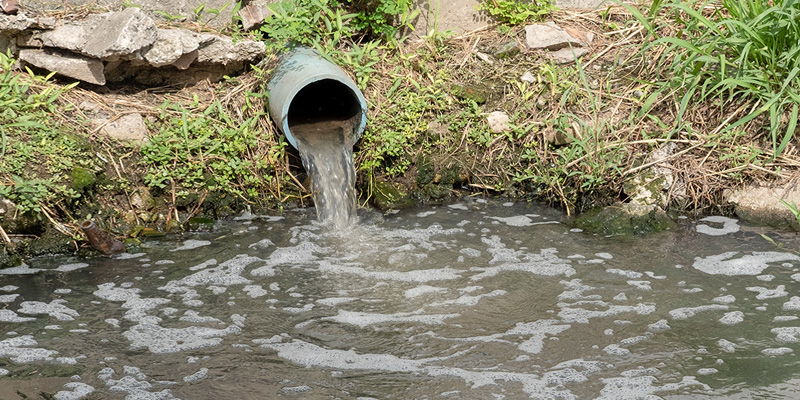Environmental Consulting
Chemical Inventory Reporting Services
In today's environmentally conscious landscape, the safety and transparency of chemical usage in facilities are paramount. The Emergency Planning and Community Right-to-Know Act (EPCRA) sets stringent guidelines for chemical inventory reporting to protect public health, safety, and the environment.
Trinity Consultants offers expert services in SDS/Tier II reporting, audits, and hazard analysis, ensuring facilities meet stringent environmental standards.
Trinity Consultants staff have been providing the following services since the inception of EPCRA:
- Report/Notice preparation
- Tier II/SDS Report review
- Compliance audits
- Hazard review & modeling
- SDS creation through our Redstone Group
- Managing cross-media impacts from chemical changes (RMP, PSM, CFATS, TRI, Air, TSCA, SWPPP, RCRA, SPCC)
How Else We Can Help
Related Services

Toxic Substance Control Act and Reporting
Ensure TSCA compliance efficiently with Trinity's expert services, including PMN, audits, risk evaluation, and active status management to meet EPA requirements.
Toxic Release Inventory (TRI) Reporting Services
Ensure EPA compliance and minimize environmental impact with Trinity's expert TRI reporting, advanced chemical management, and pollution prevention services.
Stormwater Pollution Prevention Plan (SWPPP)
Trinity is the leading industry regulatory expert in SWPPP stormwater runoff from industrial facilities and construction sites that can contaminate rivers, lakes, and coastal waters.
Spill Prevention, Control, and Countermeasure Plan (SPCC)
Trinity has the expertise to develop SPCC Plans across numerous industrial facilities and can assist with plan revisions and program audits.Our Results
Featured Projects

Refinery Enhances BWON Compliance Program
A large petroleum refinery subject to BWON controls engaged Trinity to ensure that the site was in compliance with BWON regulations and was prepared for an eventual U.S. EPA inspection.
A Global Chemicals Company Integrates for HSE Compliance Visibility
A long-time Trinity client engaged the air and Digital Solutions teams to support permitting and software installation needs.
Trinity Brings Calm Vigilance to Packaging Giant’s Multisite Environmental Reporting Requirements
A very large packaging company in Illinois partnered with Trinity Consultants to evaluate and improve their environmental program.
Trinity’s Technical RCRA Expertise Supports Streamlined Permitting
Our RCRA specialists help companies facing challenges with the extensive documentation and intricate details required for Part A and Part B permitting.Regulatory Background
Who May Need Chemical Inventory Reporting Support and Why?
What is the Chemical Inventory Reporting Rule under EPCRA?
The Emergency Planning and Community Right-to-Know Act (EPCRA) is designed to help local communities protect public health, safety, and the environment from chemical hazards. Facilities must maintain a material Safety Data Sheet (SDS) for any hazardous chemical used or stored. Facilities must submit SDSs, or a list of hazardous chemicals, to their State Emergency Response Commission (SERC), Local Emergency Planning Committee (LEPC) and local fire department.
Facilities must also submit an annual inventory (Tier II) of these chemicals by March 1 of each year to their SERC, LEPC and local fire department. Some states have additional reporting requirements. The information submitted by facilities must be made available to the public.
Does your facility need to make these reports?
Any facility that is required to maintain SDSs under the Occupational Safety and Health Administration (OSHA) regulations for hazardous chemicals stored or used in the workplace is subject to reporting if the amounts stored exceed certain thresholds. There is no list of reportable chemicals. EPA estimates that over 500,000 chemicals/products present OSHA hazards and are thus reportable.
What is the Emergency Planning Rule under EPCRA?
The Emergency Planning Rule allows LEPCs to develop local emergency response plans to address hazards posed by extremely hazardous substances. You must comply with the emergency planning requirements if your facility meets either of the following two conditions: (a) Any extremely hazardous substance (EHS) is present at your facility in an amount equal to or greater than its threshold planning quantity (TPQ), or (b) your facility has been designated for emergency planning purposes.
Important Dates / Deadlines
SDS reporting is a one-time submittal. New facilities have three months after becoming subject to the OSHA regulations to submit their SDSs or the list of the hazardous chemicals to their SERC, LEPC, and the fire department. Existing facilities also have to update the report if an SDS indicates new hazards, compositions change, or if any unreported chemicals exceed the reporting thresholds.
Facilities that need to submit SDSs or the list of hazardous chemicals also need to submit an annual inventory report for the same chemicals. This inventory report must be submitted to the SERC, LEPC and local fire department by March 1 of each year in most states.
A facility subject to Emergency Planning must notify the SERC and the LEPC within 60 days after they first receive a shipment or produce the substance on site at or above the TPQ. The facility must also notify the LEPC of a facility representative who will participate in the emergency planning process and provide notice within 30 days of any changes relevant to emergency planning.